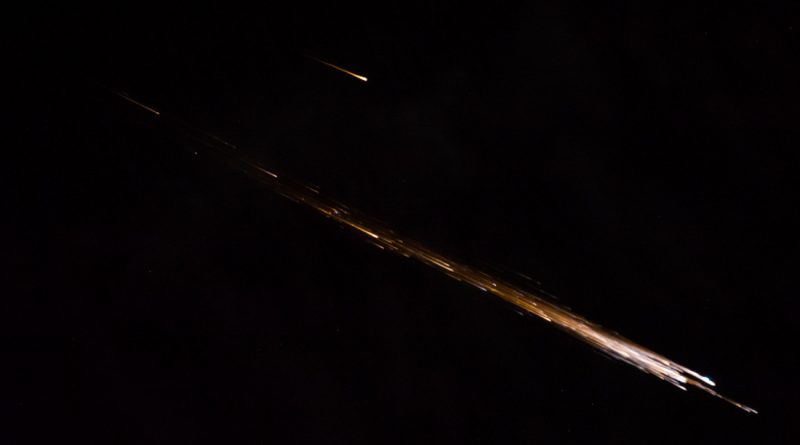Cygnus OA-7 fades from Existence in Fiery Re-Entry after successful Fire Experiment & CubeSat Release
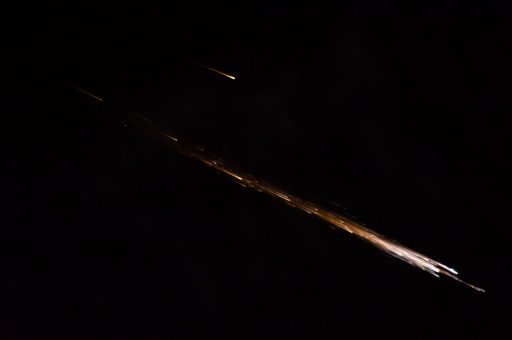
The Orbital ATK Cygnus OA-7 cargo spacecraft met its fiery fate on Sunday when the vehicle made a targeted re-entry over the Pacific Ocean, closing out a 54-day mission that included a six-week stay at the International Space Station to facilitate a critical cargo delivery and a week-long free flight dedicated to a fire experiment and the deployment of small CubeSats.
Named the S.S. John Glenn, Cygnus arrived at ISS back on April 22, four days after lifting off on a ULA Atlas V rocket that was chosen for this mission for its schedule certainty and extra performance to fill Cygnus to the brink with gear needed aboard ISS for a busy summer of science operations. All in all, Cygnus ferried 3,376 Kilograms of cargo to ISS including a new plant growth facility, over 30 CubeSats for deployment from the Station, and a variety of biology samples carried in four powered Polar Freezers.
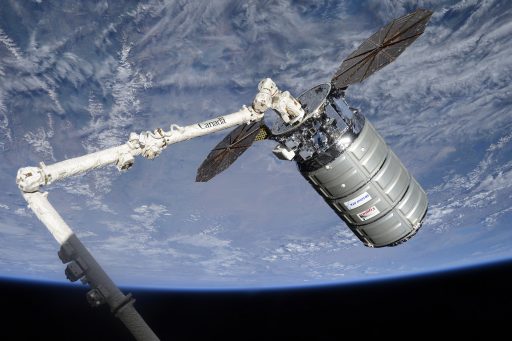
Cygnus was originally booked for a stay at ISS through July 16, but a plan for an early departure was exercised when a day became available to the ISS crew’s schedule as the result of a weather-related delay to the Dragon SpX-11 mission that arrived at the complex earlier this week. The early departure had been in the plans all along and went into action when Dragon was delayed, freeing up crew time later down the road to tack an extremely packed experiment schedule for the June and July time frame.
The OA-7 spacecraft was set free at 13:10 UTC last Sunday, concluding a 43-day stay at the International Space Station. At the time of the craft’s departure, three payloads were still on board – the SAFFIRE-III in-space fire experiment, a group of four Lemur-2 CubeSats and the RED-Data-2 re-entry data recorder.
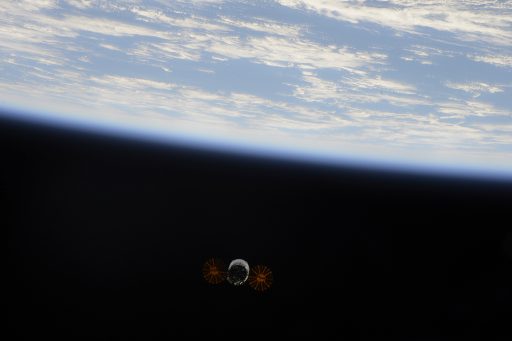
After the Station’s robotic arm let go of the Cygnus, the spacecraft executed a two-minute departure maneuver to pull out in front of the Station, followed four hours later by a 1.4-meter per second orbit adjustment to enter a slightly higher orbit than ISS to avoid interference with ISS operations such as the arrival of the Dragon cargo vehicle one day after Cygnus’ departure.
With Cygnus in an independent orbit, NASA’s Glenn Research Center and Orbital’s Mission Control Center began work to power up the SAFFIRE-III experiment unit that was strapped down in the Cygnus spacecraft by the crew for its experiment run after the craft’s departure. SAFFIRE-III is the third and last experiment in the initial series of Spacecraft Fire Experiments that make use of the Cygnus spacecraft after ISS departure as a safe environment to study large-scale fires in the space environment.
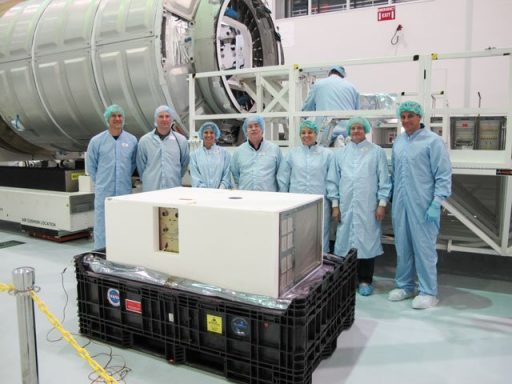
SAFFIRE-I was performed in June 2016 and ignited a large 0.4 by 0.94-meter piece of cotton-fiberglass fabric to examine flame spread dynamics and oxygen consumption of a fire at a realistic scale. The next SAFFIRE experiment, conducted on the Cygnus OA-5 mission in November 2016, was different and used nine smaller sample cards to look at the flammability of different materials and varying thickness to help inform spacecraft designers when choosing interior materials for future crewed spacecraft.
The overall aim of SAFFIRE is to provide hard data of microgravity fire dynamics for computational models used to assess the fire safety of future crewed spacecraft. To date, experimentation with large-scale fires in space had been next to impossible as safety standards for crewed spacecraft like ISS will not allow for experimentation with large fires.
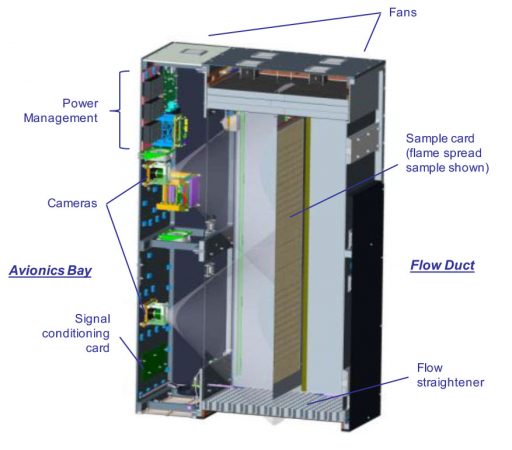
Simulations currently in use for fire safety assessments of crewed spacecraft employ models based on data for fires on Earth which may not apply to a spacecraft in a microgravity environment and SAFFIRE sets out to provide the data needed to refine such assessments.
SAFFIRE-III used an identical cotton-fiberglass sample inside an identical flow duct as SAFFIRE-I, but the fans directing air through the duct were run faster to create a higher flow rate on the flame. The objective of running the same experiment at two different air speeds was to collect data on how the flow environment influences flame spread in microgravity.
“For Saffire-I, we measured flame spread rates for burns both in the same direction as the air flow and in the opposite direction of the air flow,” said SAFFIRE investigator Gary A. Ruff. “We need to get additional data at another air flow speed using the same material to compare with the predictions of the computational model.”
A first look at our latest fire in space! More on the #Saffire experiment & why we’re studying fire in microgravity: https://t.co/J9DaP72JGf pic.twitter.com/0aMg2sOU2U
— NASA's Glenn Research Center (@NASAglenn) June 8, 2017
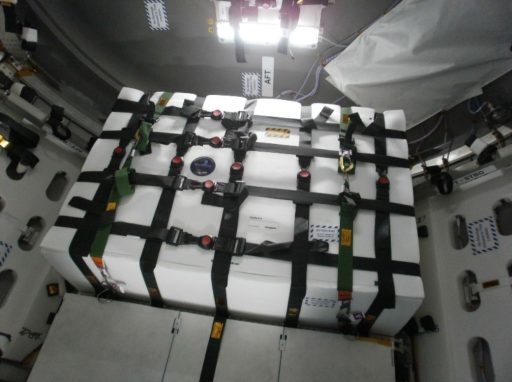
Experimentation prior to SAFFIRE used samples up to 10 centimeters and showed that fires in space burn at lower temperatures, lower rate and less oxygen. SAFFIRE-I revealed more surprises, particularly in a very slow flame spread across the large sample – up to three times slower than scientists had expected. A slow flame may seem more favorable than a fast-spreading fire, but slower smoke production could cause a time delay before a smoke detector can alert the crew of the fire. Also, slow moving fires generate more carbon monoxide bringing with it the concern of suffocation.
The faster airflow of the SAFFIRE-III experiment provides a valuable data point to assess flame front progression in different flow environments, including those typically found aboard a crewed spacecraft. Ignition of SAFFIRE-III was confirmed at 21:17 UTC last Sunday and the experiment was completed as expected, gathering video of the burn as well as data from temperature, airflow and oxygen sensors to provide a complete picture of the flame progression. It took several days for data from the experiment to be downlinked, requiring Cygnus to remain in free flight.
SAFFIRE IV through VI are currently under development to continue the highly successful experiment series with a focus on the creation and spread of toxic combustion gases.
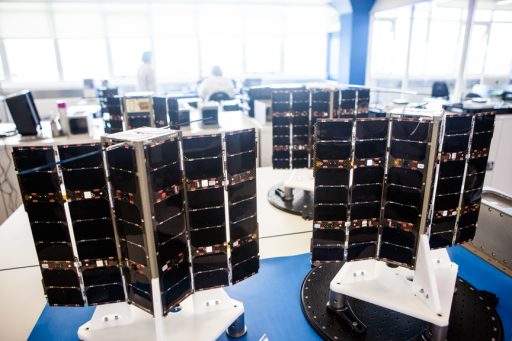
A pair of main engine burns on Thursday placed Cygnus into an orbit of 476 by 486 Kilometers, around 80 Kilometers above the International Space Station. At 17:53 and 21:03 UTC on Thursday, Cygnus deployed two pairs of Lemur-2 CubeSats to join Spire Global’s constellation of ship-tracking and atmospheric sensing satellites. Nicknamed Jennybarna, Angela, Spirovision and Robmoore, the four satellites take advantage of the higher deployment orbit for a longer service life of over two years compared to satellites deployed from ISS that typically decay within one year.
The Lemur-2 satellites comply with the 3U CubeSat form factor and measure only 30 by 10 by 10-centimeters in size, hosting a pair of instruments – SENSE dedicated to tracking ship traffic on a global scale via the Automatic Identification System, and STRATOS that uses GPS signals which penetrate Earth’s atmosphere to measure parameters relevant to weather forecasters.
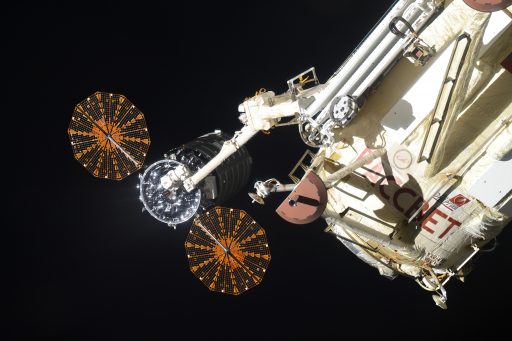
On Saturday, Cygnus set up for the fiery end of its mission, performing a series of three orbit-lowering maneuvers followed by a deorbit setup maneuver at 12 UTC on Sunday to prepare for the final deorbit burn, hitting the brakes by firing the BT-4 engine in a retrograde attitude at 16:37 UTC to drop out of orbit.
The five-and-a-half-minute deorbit burn was precisely calculated to set up for re-entry over a remote stretch of the Pacific Ocean to ensure any surviving parts of the spacecraft impact far from populated land masses and away from shipping lanes.
Still weighing in at over five metric tons, Cygnus slammed into the dense layers of the atmosphere at 17:02 UTC and drag quickly built up to a destructive force – first ripping off the spacecraft’s two circular solar arrays before triggering the onset of fragmentation of the spacecraft with the pressurized cargo module breaching, causing an explosive release of air.
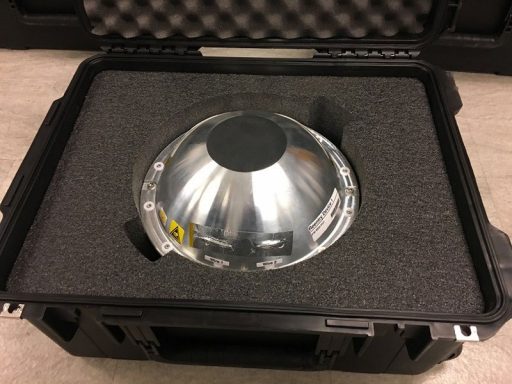
Re-entry marked the start of the final experiment of this mission, RED-Data-2 – a soccer-ball sized capsule that pursues two areas of research, one being the collection of vehicle dynamics data during atmospheric entry and the other being the development of high-temperature heat shield materials suitable for sample return vehicles and planetary re-entry missions.
Nine centimeters in diameter and weighing in at 2.4 Kilograms, the device contained instrumentation to track a number of parameters during atmospheric entry like vehicle location, acceleration, temperature, pressure and body rates – allowing a full reconstruction of the craft’s fiery demise. Studies of the break-up characteristics of vehicles and the entry environment are of great importance to better understand how large satellites and pieces of space debris break-up during their blazing entry into Earth’s atmosphere.
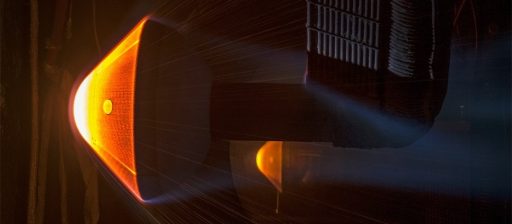
The second part of RED-Data2’s mission came after it was detached from Cygnus, testing a pair of new heat shield materials in the actual re-entry environment which is difficult to simulate for ground-based tests given the speeds and energy involved. RED-Data2 put to the test a new variation of the PICA heat shield material used by NASA and the SpaceX Dragon and a new tweak to the Avcoat heat shield used by the Orion spacecraft which will make future manufacture easier.
Putting a checkmark behind the OA-7 mission, Orbital ATK will be shifting focus to the next Cygnus flight known as OA-8E, currently targeting launch in September atop the company’s Antares rocket. This will be the first of four Orbital ATK missions under the extended Commercial Resupply Services 1 contract awarded by NASA to bridge a gap between CRS1 and the start of CRS2 missions in 2019.
The exact schedule for the mission remains subject to change based on the Space Station’s cargo needs, though preparations are already underway at the Wallops Flight Facility where Orbital ATK is readying its second Antares 200-series launch vehicle after a successful debut on the OA-5 mission last year.

